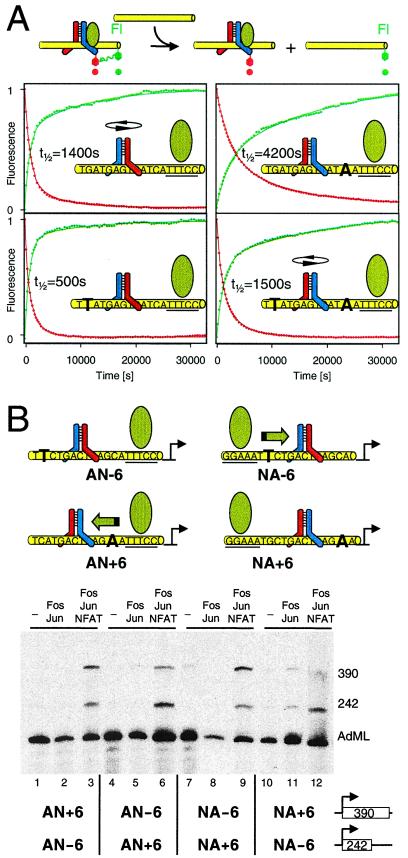Figure 4.
Influence of Fos-Jun orientation preference on the synergy between Fos-Jun and NFAT1. (A) Comparison of the dissociation rates of Fos-Jun-NFAT1 complexes at binding sites containing single base pair substitutions. The changes in fluorescein (green) and Texas red fluorescence after addition of genomic DNA to Fos-Jun-NFAT1 complexes at the binding site shown in each graph are shown. The diagram in each graph indicates the preferred orientation of Fos-Jun binding in the absence of NFAT1 (4, 5). (B) Analysis of the transcriptional activities of Fos-Jun-NFAT1 complexes at regulatory elements with different orientation preferences of Fos-Jun binding and different relative positions of AP-1 and NFAT1 recognition sequences. The orientation preferences of Fos-Jun binding and the positions of the NFAT recognition sequences on the various promoters are shown above the autoradiogram. The green arrow indicates the orientation of Fos-Jun binding required for stable interaction with NFAT1. Each reaction contained two templates with the promoters indicated below the lanes linked to G-less transcription units of different lengths indicated to the right of the promoters. The transcription reactions were supplemented with the proteins indicated above the lanes. Quantitation of the efficiencies of transcription activation and the relative transcriptional activities of the promoters in the absence of NFAT1 are shown in Fig. 7, which is published as supplemental material.

